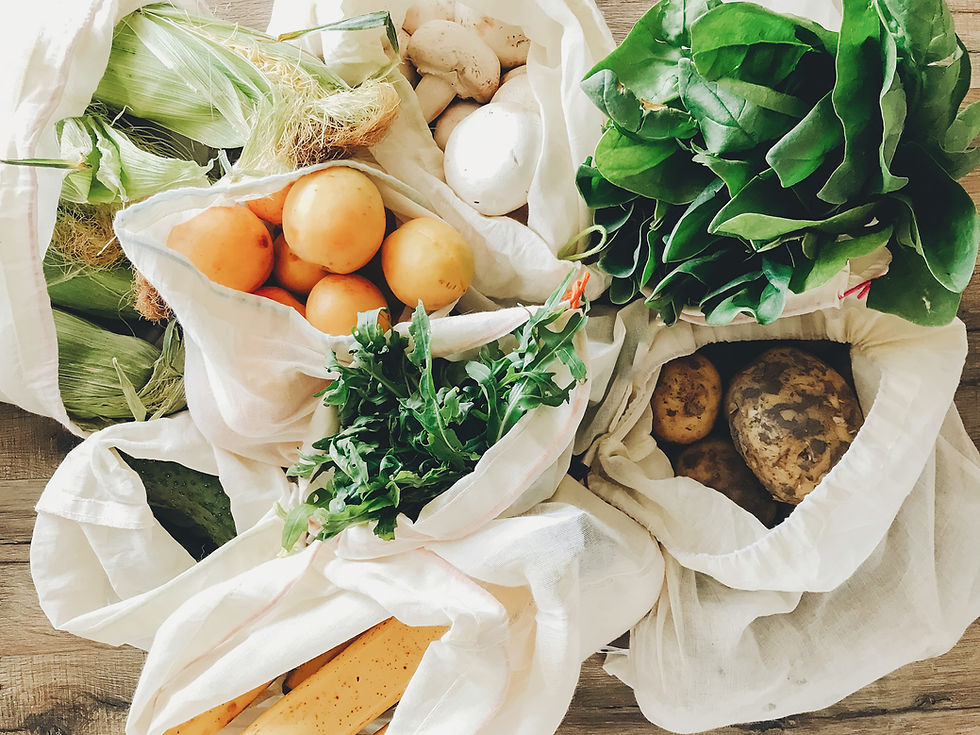Nourishing Your Gut: A Pelvic Health OT's Perspective on Nutrition and Bowel Health
- thepelvicot
- Aug 16, 2023
- 4 min read

As a pelvic health occupational therapist, my practice revolves around improving the overall well-being and functionality of my patients' pelvic region. While much attention is given to exercises and therapies for pelvic floor muscles, it's crucial not to overlook the significant impact that nutrition has on bowel health. The gut plays a pivotal role in pelvic health, and the choices we make in our diets can have a profound effect on our overall well-being. In this blog post, we will delve into the relationship between nutrition and bowel health, exploring key dietary factors that can contribute to optimal pelvic function.
The Gut-Pelvic Connection
The gut and pelvic region are intricately connected through a complex network of nerves, muscles, and hormones. This connection means that the health of one can significantly influence the other. Poor bowel health can lead to a range of pelvic issues, including constipation, fecal incontinence, and pelvic pain. On the other hand, a well-nourished gut can contribute to better pelvic function and improved quality of life.
Key Nutritional Factors for Bowel Health
Fiber Intake: Adequate fiber intake is paramount for maintaining healthy bowel function. Soluble fiber helps soften stools, making them easier to pass, while insoluble fiber adds bulk to stool and aids in regular bowel movements. A high-fiber diet can prevent constipation, which is a common precursor to various pelvic issues. Whole grains, legumes, fruits, and vegetables are excellent sources of fiber. See a full list below of common soluble and insoluble foods.

Hydration: Staying well-hydrated is essential for maintaining healthy bowel movements. Dehydration can lead to hard, dry stools that are difficult to pass, increasing the risk of constipation. Drinking an adequate amount of water throughout the day can help prevent these issues.
Probiotics: A balanced gut microbiome is crucial for digestive health. Probiotics are beneficial bacteria that help maintain a healthy gut environment. Consuming probiotic-rich foods, such as yogurt and fermented vegetables, or taking probiotic supplements can support gut health and improve bowel regularity.

Healthy Fats: Including sources of healthy fats, such as omega-3 fatty acids, in your diet can help reduce inflammation in the gut and promote overall bowel health. Fatty fish, flaxseeds, and walnuts are excellent sources of omega-3s.
Here's a list of foods that are good sources of soluble and insoluble fiber:
Soluble Fiber Sources:
1. Oats: Oatmeal and oat bran are rich in soluble fiber, known as beta-glucans, which can help lower cholesterol levels.
2. Legumes: Beans (kidney beans, black beans, navy beans, etc.), lentils, and chickpeas are excellent sources of soluble fiber.
3. Fruits: Apples, pears, citrus fruits (oranges, grapefruits), berries (strawberries, blueberries), and bananas are high in soluble fiber.
4. Vegetables: Carrots, broccoli, Brussels sprouts, and sweet potatoes contain soluble fiber.
5. Flaxseeds: These small seeds are not only high in soluble fiber but also rich in omega-3 fatty acids.
6. Chia Seeds: Chia seeds are another fantastic source of soluble fiber that can absorb water and form a gel-like consistency.
7. Psyllium Husk: Often used as a dietary supplement, psyllium husk is a concentrated source of soluble fiber.
Insoluble Fiber Sources:
1. Whole Grains: Whole wheat, brown rice, quinoa, barley, and whole grain bread are high in insoluble fiber.
2. Bran: Wheat bran, rice bran, and oat bran are rich sources of insoluble fiber.
3. Nuts and Seeds: Almonds, walnuts, sunflower seeds, and pumpkin seeds provide insoluble fiber along with healthy fats.
4. Vegetables: Dark leafy greens (spinach, kale, Swiss chard), celery, cabbage, and cauliflower are good sources of insoluble fiber.
5. Fruit Skins: The skins of fruits like apples, pears, grapes, and kiwi are rich in insoluble fiber.
6. Corn: Corn kernels contain insoluble fiber, especially when eaten whole.
7. Whole Vegetables: Peas and green beans are examples of vegetables that offer a mix of soluble and insoluble fiber.
It's important to note that many plant-based foods contain a combination of both soluble and insoluble fiber, contributing to a well-rounded and balanced dietary fiber intake. Consuming a variety of these foods can help support digestive health and overall well-being. Remember to gradually increase your fiber intake and drink plenty of water to help prevent any digestive discomfort.
As a pelvic health occupational therapist, I've witnessed firsthand the profound impact that nutrition can have on bowel health and, consequently, pelvic function. By prioritizing a diet rich in fiber, staying hydrated, incorporating probiotics, and consuming healthy fats, you can support your gut health and promote optimal pelvic well-being. Remember, a holistic approach to pelvic health encompasses not only targeted exercises but also nourishing your body with the right nutrients.
Always consult with a healthcare professional, such as your primary care physician, a pelvic health occupational therapist, or a registered dietitian, before making changes to your diet or treatment plan.
References:
Burkitt, D. P., & Trowell, H. C. (1975). Refined Carbohydrate Foods and Disease: Some Implications of Dietary Fibre. The American Journal of Clinical Nutrition, 28(3), 270–278.
Parvez, S., Malik, K. A., Kang, S. A., & Kim, H. Y. (2006). Probiotics and their fermented food products are beneficial for health. Journal of Applied Microbiology, 100(6), 1171–1185.
Prosser, C., Storr, M., & Michener, C. (2018). Gastrointestinal Motility Problems in the Pelvic Floor: Bowel Dysfunction and Constipation. Biofeedback, 46(1), 9–13.
Simopoulos, A. P. (2002). Omega-3 Fatty Acids in Inflammation and Autoimmune Diseases. Journal of the American College of Nutrition, 21(6), 495–505.
Comments